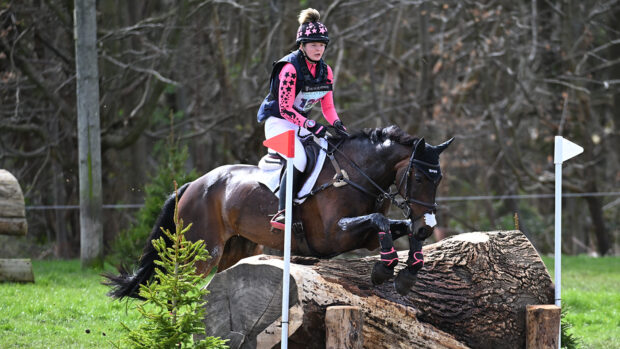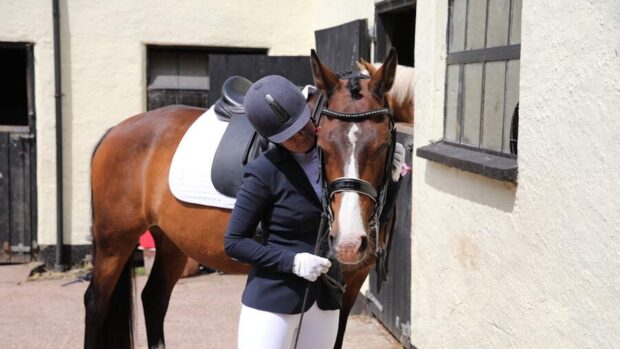THE banning of jumps racing in South Australia is a “salutary reminder” to the equestrian industry of the potential impact of failing to act.
The state has become the second to outlaw the sport, following New South Wales, and Victoria 9including Melbourne, pictured) is now the only Australian state in which jump racing is allowed.
Although Racing South Australia had not programmed any jumps racing since last October, citing economic rather than welfare-related reasons, the state’s animal welfare legislation has been amended to prohibit any further events.
A spokesman for South Australian deputy premier Susan Close said: “While jumps races were once an intrinsic part of the racing industry, it has fallen out of favour with the public who find the number of falls and deaths unacceptable.”
Ms Close added: “The community and the racing industry gave up on jumps racing some time ago and the parliament is reflecting this change in attitudes.
“Banning the sport through legislation gives certainty to the racing industry.
“It will enable the rest of the industry to be clearly distinguished from the accidents associated with jumps in the public mind.”
Flat racing is unaffected, and the change does not prohibit South Australians training jumps horses to race in other states. Nor does it affect showjumping or other equestrian disciplines.
But World Horse Welfare CEO Roly Owers told H&H: “The demise of jump racing in South Australia is a salutary reminder to everyone in the equestrian world – not just racing – of what our future might look like if we do not act now.
“Unless we place the welfare of our horses at the heart of everything that we do, and be seen to be doing so, it will be impossible to maintain public support, which makes government intervention all the more likely. We have to constantly challenge ourselves to keep an open mind to ensure we really are doing right by our horses – and to make a step change in how we engage with critics and the general public – to truly safeguard the future of our sports.”
H&H reported last month that in a survey commissioned by World Horse Welfare, that 20% of respondents did not support the involvement of horses in sport under any circumstances.
Key to maintaining social licence, or public acceptance of horse sport, is celebrating the horse-human partnership, and ensuring the public knows that horse welfare is always the top priority.
British Horseracing Authority CEO Julie Harrington told H&H that, as with all industries, “racing must, at the same time, demonstrate confidence in its high standards, while listening to its current and future customers”.
“Racing brings a quality of life to horses that is truly exceptional, and our sport and its participants are focused on the safety and welfare of our horses,” she said. “We are not just a major sport but also a major industry, which has a huge economic impact and generates employment for more than 80,000 people.
“We have a cross-industry welfare strategy in place based around the premise of all racehorses leading ‘A life well lived’, the recommendations of which are being delivered on a systematic basis and include the recent whip report and numerous innovations to further enhance safety on course.
“We are rightly proud of all of this and as a sport are working to do more to explain it, through initiatives such as National Racehorse Week.
“However, we must also understand that, in a society where views on animal rights and welfare are rapidly evolving, we do not have a divine right to expect unconditional support from the public or even the Government.
“We must ensure that we continue to listen to concerns and either seek to learn from them and evolve, or do more to explain and reassure. This is important for the long-term health, prosperity and popularity of the sport.”
A Racing SA spokesman told H&H: “Racing SA notes parliament’s passing of this bill, and reiterates that the decision we took in October 2021 to no longer schedule jumps racing in South Australia was based on the economic viability of the industry and not on welfare.
“While that decision was final and irreversible, we trust this closes the book on any debate around the future of jumps racing. We look forward to continuing to work with the state government on growing the thoroughbred racing industry across South Australia.”
You might also be interested in:

*Opinion* Scaremongering clickbait, or a very real threat to the sport we all love?

A positive future for the horse-human partnership — if we all work together

Subscribe to Horse & Hound magazine today – and enjoy unlimited website access all year round
Horse & Hound magazine, out every Thursday, is packed with all the latest news and reports, as well as interviews, specials, nostalgia, vet and training advice. Find how you can enjoy the magazine delivered to your door every week, plus options to upgrade your subscription to access our online service that brings you breaking news and reports as well as other benefits.




